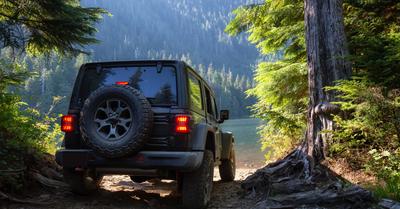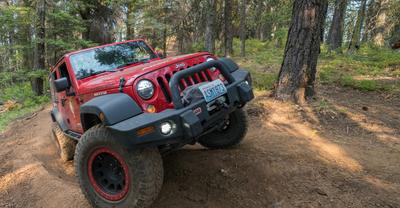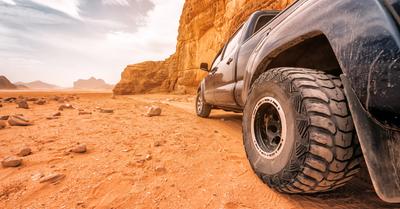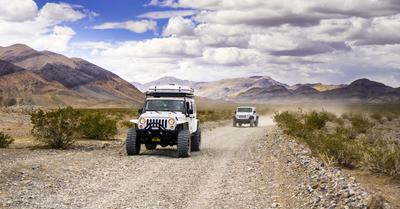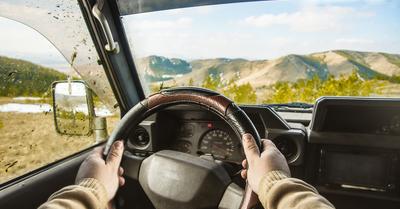You’re a driver who loves to go more off the road than on it. But can you use the same tires for both terrains, or do off-road tires wear faster on paved roads?
Off-Road tires usually have softer rubber and a larger contact patch. This makes the tire wear out more quickly when used on paved surfaces. All-Terrain tires are better suited for highways and can last between 40,000 - 50,000 miles. On the other hand, Mud Tires last between 20,000 - 40,000 miles.
Today, an average off-roader spends more than seventy percent of their time driving on paved roads. The tires are manufactured using different materials to suit various terrains. Using the wrong types of tires can be expensive and cause the tires to wear out more quickly.
According to Bridgestone experts, tire life is dependent on several factors like quality, weather conditions, and the types of terrain it is used on. Poor quality tires wear out faster and will require to be replaced more often. Similarly, tires running on rough terrains face harsh conditions and will likely deteriorate faster.
This article may contain affiliate links where we earn a commission from qualifying purchases.
Types of Off-Road Tires
There are two main types of off-road tires; All-Terrains (A/T) and Mud Terrains (M/T)
All-Terrain Tires
All-terrain or A/T Tires, as the name implies, are designed for both on-road and off-road driving. They offer traction on the road and perform reasonably well while off-roading. They feature an open-tread design that lowers the traction on softer terrain. The open-tread is paired with grooves that offer good handling on paved roads
But if you drive only around streets and highways, installing All-Terrains is probably not a good idea. These tires are designed for off-roading and are slightly more expensive than regular tires. The extra money you are putting in will go to waste.
Usually, All Terrain tires last about fifty thousand miles and perform well on rock, sand, and mud. But when it comes to highways and street driving, these tires feel rough and slightly noisy compared to their highway terrain alternatives.
A considerable benefit of all-terrain tires is that they can be used all year round. Although, many drivers claim that once the mercury dips below 44 degrees, there is a slight compromise in the performance.In this case, installing a set of good winter tires might be an option.
Most all-terrain tires come with reinforced sidewalls.It allows for better load capacity due to stronger sidewalls. Most campers prefer using all-terrains because they need to haul around large loads.
Since these tires are made of a softer rubber than touring tires, they are prone to cupping or uneven tread wear. You should check your tires regularly and rotate them after every 6000 to 8000 miles.
Tires have a significant role when it comes to fuel efficiency. All-terrain tires are less fuel-efficient due to a more aggressive design than ordinary touring tires. The larger grooves and open-tread design offer more rolling and air resistance.
Generally, you will want to go for all-terrain tires if you want decent performance both on and off the road. But if you are looking to get exceptional performance off-road, you will need to consider a more aggressive option.
Mud-Terrain Tires
Mud-terrain or M/T tires are built with only one purpose in mind; off-road performance. Some experts believe that M/T stands for Maximum Traction.
No matter how much ground clearance, horsepower, or expertise you may have, if your tire cannot clean the mud coming into the grooves, you will end up spinning in one place. This is why grooves and blocks on mud tires are much broader and deeper. This design allows the sticky mud to pass through the tire more efficiently, and if any mud gets packed in the tire, they can clean themselves efficiently.
The narrower the grooves on a tire, the more speed they will require to spin out the mud stuck between them. As you already know, off-roading seldom has anything to do with high speeds.
The design enables gravel, mud, and sand to channel through the tire like water is channeled through a touring tire.
If you find your vehicle going all over the place when off-roading on a specific trail, it is time to switch to mud tires. These tires offer phenomenal grip and are highly durable.
Maximizing Off-Road Tire Life
Like many other vital parts of your vehicle, your tires are also prone to wear and tear. Typically, they are the only thing that makes contact with the ground, making them more susceptible to being worn away faster.
Off-road vehicles push the limits when braving treacherous terrains. Just like your ordinary sedan, you will need to care for the tires on your 4x4. But, do all rules equally apply to both tire types?
Let us look at some ways you can use to maximize your off-road tire life.
Select the Right Tires
It is crucial to select the right tire for your vehicle, depending on the terrain it will be used on and the vehicle's weight. For most passenger cars, you will find a sticker inside the driver's door giving you all the information you might need.
But if you have a modified vehicle with a more robust suspension and larger shock absorbers, the stock tire specifications might not apply to your 4x4. You will need to do some research to find the best tire as per your requirements.
Maintain Low Pressure
We all know that keeping the tire well-inflated to the correct pressure is essential. It helps with tire life and vehicle performance and can considerably impact fuel economy.
In contrast to passenger vehicles, off-road vehicles perform better with lower air pressure while running on trails. This happens because as the pressure lowers, the contact surface area or footprint of the tire increases, and the tire provides more traction.
Reducing the pressure also allows the tire to mold over surfaces and prevents the tire from blowing out or receiving severe damage.
Rotate Tires Regularly
All vehicles have different powertrains. Some are front-wheel drive, while others are rear-wheel drive. Yet, some vehicles allow you to switch between the wheels you want to power. For this reason, tires do not wear out evenly because some areas receive more strain than others.
It is essential to rotate the tires at the correct intervals to ensure maximum tire life. It is also advisable to include the spare tire in your rotation process. You do not want to end up with four worn-out tires and a single one that is brand new.
Check Shock Absorbers Regularly
Since the tires are mounted on the suspension, it is important that the suspension is in good shape to ensure its longevity. A faulty suspension can cause cupping on a new tire, making it useless after only a few thousand miles.
Since off-road vehicles push suspensions to the limit, there are higher chances of damage to the shock absorbers, linkers, and boots. It is essential to check and replace the faulty parts as soon as possible to make sure that they do not put a toll on the tires.
Keep the Alignment Correct
For the same reasons as faulty suspensions, it is essential to keep the alignment of the tires at the correct levels. Poorly aligned tires wear out unevenly and much more quickly.
You need to get your wheels aligned whenever you change your tires or do any suspension work. This will bring the tires back to their optimum angles and will inhibit uneven wear
Suppose you have installed a suspension lift or made any modifications to the suspension. In that case, chances are the factory specifications will no longer apply to your vehicle, and you will need to get the tires aligned as per the recommendations of your trusted alignment technician.
Store Tires Properly
Eventually, all tires dry up and become harder, leading to cracked rubber. This process speeds up if your tires are lying outside for longer periods. The harmful rays of the sun can quickly inflict a lot of unseen damage on your tires.
It is best to store tires inside a garage or under some shade. If the tires are mounted on your vehicle, and you will not be using them for a long time, consider investing in some tire covers. You can slip the covers on after your trip and take them off when you are ready to roll.


